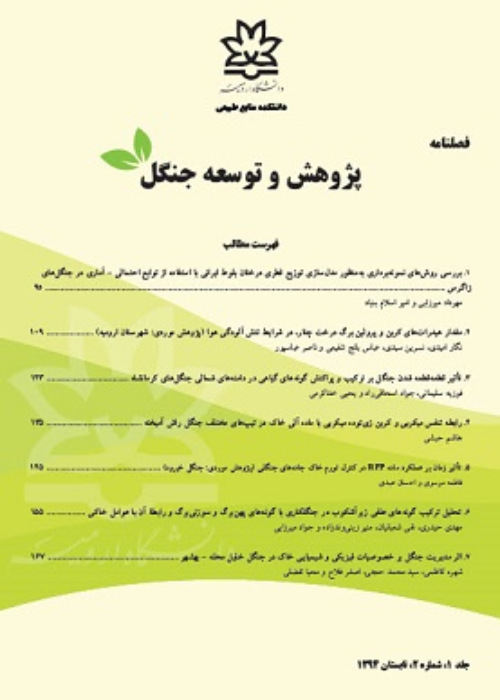Analysis of forest stakeholders' attitudes toward participatory management in the Sardasht forests, Iranian northern Zagros
Centralized and top-down decision-making are increasingly insufficient to address local natural resource governance concerns and demands. As a result of the failure of state forest management, governments and allied organizations have been obliged to shift their policies and programs toward participatory (people-oriented) forest management. After realizing the limits of forest monitoring regulations, participatory approaches to forest management employ top-down decision-making methods. Academics, institutions, and governments have all accepted cooperative strategies in recent decades, and they have been implemented in various ways based on geographical diversity, socioeconomic conditions, cultural values, traditional beliefs, general attitudes, implemented policies, and institutional specifics. This study aimed to find out the attitudes of Sardasht city's forest stakeholders toward participatory management.
This research focused on Sardasht, a city in the south of West Azarbaijan province. The study technique is exploratory in terms of practical goal and descriptive-survey in terms of data collection, which was acquired using the Q method to determine the varied mental patterns of stakeholders on cooperative forest management. The Q approach is used to explore people's inner believed in an ordered and statistically interpretable approach. This strategy combines qualitative attitude surveys with the statistical rigor of quantitative research methods. The Q method was used for this study owing to the subject's heterogeneity and the significance of stakeholders' perspectives on forest management in Sardasht city. This procedure began with the collecting of the discourse space and culminated with the acquisition of Q research data, or sorting. This study's statistical community consisted of 29 individuals, comprising all Sardasht forest stakeholders such as villagers and forest residents, natural resources professionals, and university academics. The following stage included the participants identifying and prioritizing 49 concepts based on the provided cards.
The research findings, as well as the number and categories of participants, revealed both variances and similarities in their range of thoughts and perspectives about participatory forest management. As a result, with the goal of researching Q and the criteria of interpretability of variables or groups, three types of participants' mentalities and viewpoints were identified with a strong correlation value. According to the findings and outcomes of Q's factorial analysis, various stakeholders exhibit three distinct mental patterns: protection with alternative livelihood, absolute protection, and participatory management with alternative livelihood. The first attitude demonstrates that individuals in this category understand the necessity of forest conservation, but because the livelihood of many households is dependent on the forest, they wish to better their situation by finding additional employment. However, their living situations will improve in relative terms. Beneficiaries in the second group believe that combining management and protected areas is a good method to conserve Sardasht forests. This is because the most major cause of forest degradation in the region is the conversion of forests to agricultural lands, and this effort lays the groundwork for the progressive loss of natural resources. A third attitude among local stakeholders is a combination of participatory management and alternative livelihoods. What is significant and obvious in this mentality is that the stakeholders accept the change of the current management style to participatory management; however, a complete and comprehensive review of it should be done first, and all of its aspects should be weighed. Finally, cooperative management should be accepted as the only main solution for natural resource.
The current study makes a major addition by modeling the mental models of the drivers using a qualitative and subjective method, emphasizing the perspectives and ideas of participants in the field of Zagros Forest management in Sardasht city. Local stakeholders' perceptions are an important component of a sound decision-making process since they engage directly with natural resource reserves and are the first to experience both their advantages and problems. As a result, their attitude, perspective, and involvement in management and policies should be considered. According to the final results, local stakeholders in Sardasht favor the conservation of Zagros forests. Furthermore, creating employment and alternative livelihoods, as well as expanding market access, can help to ensure the long-term management of forest resources by including local populations in decision-making processes. This range of perspectives emphasizes the importance of developing active and adaptable natural resource management systems.
- حق عضویت دریافتی صرف حمایت از نشریات عضو و نگهداری، تکمیل و توسعه مگیران میشود.
- پرداخت حق اشتراک و دانلود مقالات اجازه بازنشر آن در سایر رسانههای چاپی و دیجیتال را به کاربر نمیدهد.


